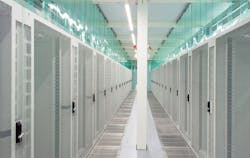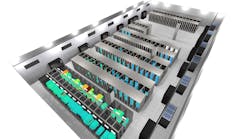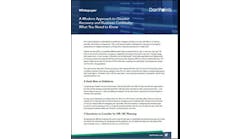Do Report Cards Still Haunt CIOs?
In this week’s Voice of the Industry, Lisa Rhodes, Vice President of Marketing at Verne Global, shares 4 tips that forward thinking CIOs should consider when planning their data center strategies.
Lisa Rhodes, VP of Marketing at Verne Global
There’s a CIO from Marist College in Poughkeepsie NY who figured out predictive analytics can tell if a student is likely to flunk a course by the third week in a semester. This happens by analyzing class performance, online activity, and collecting student data from more than a dozen digital sources. By analyzing in-class behavior and the underlying participation and engagement online, teachers are able to identify potential issues and address them before a student becomes in danger of failing a course.
Imagine a similar project examining whether or not companies are at risk of failing based on their data-intensive projects, like HPC clusters or data analytics. What would the criteria need to be? Surely there would be something about server density, application security, and reliability of the network. One hidden risk starting to bubble up is power, or more precisely, the stability, reliability and availability of power from the electrical grid. Many CIOs may see this as outside of their control, but in reality, it needs to be factored into any decision that relates to power-hungry, data-intensive applications they are implementing for their businesses.
The globally connected world is becoming increasingly data-intensive
Enterprises worldwide are finding long-term, strategic business benefits by better analyzing and extracting more value from the data they create and gather. With data volume expected to double approximately every two years, there is enormous potential economic value to society, worth many trillions of dollars. As a result, the value of the data center is also increasing as quick access to this critical information is becoming more important than ever before.
The crippling cost of a power outage
Data centers rely on a continuous feed of power from their electric utility. If the grid goes down, data centers can be quite vulnerable with an immediate financial impact for many companies. A 2016 survey of 63 US datacenters that reported an outage within the past 12 months indicated the average cost of a datacenter outage is over $740,000, up 7% from 2013 and 38% from 2010. Data center outages are no longer just an inconvenience; there is a true business cost to the organization.
Consider the power grid profile of a data center location
There is a direct correlation between an increase in electricity demands in data centers and a decrease in the necessary power grids and infrastructure to support this growth. Many of these grids are functioning on aging infrastructures and facing increasing reliability issues and cost pressures, as well as a mandate to decarbonize electricity supply resources. As data centers put more stress on already brittle power systems, CIOs need to think beyond the availability of electricity, but whether or not the power will even be on when their data center needs it.
So, what is a forward thinking CIO to do?
- 1. Make sure you understand the full scope of HPC projects currently underway in your company. There may be a project or two hidden in a different department. You need to be aware of these projects as they now likely impact your budget and data center resources.
- 2. Get a report card on the power grid for any location where you have data centers. The utility contract may not be part of the CIOs usual purview, but everything the CIO is responsible for – including business continuity of the organization – relies heavily on the power infrastructure.
- 3. Think about the cost of downtime associated with the applications in those data centers and how that impacts your business in terms of operational and opportunity cost.
- 4. Examine the applications you have running at each location. Some applications, like financial trading, will dictate location based on latency, resiliency and other requirements, but many won’t. Applications such as data analytics, HPC and scientific research might be ideal to move to a location with a more stable power grid as a way to minimize your total risk exposure from a fragile or limited capacity grid.
Going back to the original idea of creating a model for predicting success, it only works if you factor in all the variables. The CIO at Marist College created a system that looked at a wide variety of factors, both overt and underlying to identify students at risk. Enterprise CIOs need to do the same.
Lisa Rhodes is Vice President of Marketing at Verne Global and responsible for all aspects of customer interaction, marketing, and public relations. You can follow Lisa on Twitter at @lisa4one. Verne Global leverages Iceland’s highly available, abundant and renewable power grid to deliver flexible, scalable and secure data center solutions. To learn more about the disconnect between data and energy availability, download our Mind The Gap white paper.





